Ultimate Guide To Podcast Hosting on SoundCloud
Podcast hosting on SoundCloud is possible, but first, what is SoundCloud?
SoundCloud is a social media platform that allows users to upload, share, and listen to audio files.
It is a great way to share your music with the world and connect with other musicians.
SoundCloud also has a built-in community of music lovers who can listen to your audio files and leave feedback.
Podcast Hosting On SoundCloud
Creating a podcast and uploading it to SoundCloud is a great way to share your voice and thoughts with the world.
In this post, we’ll learn how to create a podcast, and then how to upload it to SoundCloud.
Do well to check out our review and ranking of the best podcast hosting sites.
How To Create A Podcast
First, you’ll need to create a podcast episode.
This can be done in many ways, but we recommend using a voice recording app on your phone or computer.
Once you have a recording, you can add it to SoundCloud.
To add your recording to SoundCloud, open the SoundCloud app or go to the SoundCloud website.
In the top left corner, click “Upload”, and then select the recording you want to upload.
Once your recording is uploaded, you can add a title, description, and tags.
You can also choose to make your podcast public or private.
To publish your podcast, go to the “Settings” tab and click Publish “
Disclosure: This post may contain affiliate links and I may receive affiliate compensation for some of the links in this post, but at no cost to you if you decide to purchase a paid plan. You can read our affiliate disclosure.
Podcast Hosting On SoundCloud In A Nutshell
SIGNUP
If you don’t have a SoundCloud account, sign up for one. It’s free! Once you’re logged in, click on the “Create” button in the top-left corner of the screen and select “Podcast.”
Second Step To Podcast Hosting On SoundCloud: UPLOAD YOUR PODCAST EPISODES
- Click on the “Upload” button in the top-left corner of the screen and select the files of your podcast episodes.
- Once they’re uploaded, you’ll be able to add a title, description, and episode notes for each one.
- You can also choose a cover image for your podcast. This will be displayed on SoundCloud and in podcast directories like iTunes.
Third Step To Podcast Hosting On SoundCloud: ADD YOUR PODCAST TO DIRECTORIES
Once your podcast episodes are uploaded, you can add them to podcast directories like iTunes and Stitcher.
This will help people find your podcast and subscribe to it.
To add your podcast to iTunes, click on the “Podcasts” tab in the top navigation bar and then click on the “Submit a Podcast” button.
Follow the instructions on the screen to add your podcast to iTunes.
Fourth Step To Podcast Hosting On SoundCloud: PROMOTE YOUR PODCAST
Now that your podcast is up and running, it’s time to promote it!
Tell your friends and family about it, and post about it on social media platforms.
With further ado, let’s look at it in detail.
How To Start Podcast Hosting on SoundCloud
1. Create a SoundCloud Account For Your Podcast
If you don’t have a SoundCloud account, sign up for one. It’s free!
2. Complete Your Profile Information
- Upload an avatar (profile picture)
- Include a short bio
- Add your website
- Add your social media links
- Select your category
Now that you have created a SoundCloud account and added some basic information, it’s time to start podcasting!
To host your podcast with SoundCloud, you will need to complete a few additional steps:
- Upload your podcast episode files
- Add episode information (title, description, etc.)
- Add your podcast’s RSS feed URL
- Select your podcast’s language
- Enable podcasting on your account
3. Uploading your Podcast Episode Files
The first step in hosting your podcast with SoundCloud is uploading your episode files.
These files can be in MP3 or AAC format and can be up to 250MB in size.
To upload your podcast episode files, click on the “Upload” button at the top of the screen and select the files you wish to upload.
You can then drag and drop the files into the upload window, or click the “Select Files” button to choose the files from your computer.
Once the files have been uploaded, they will appear in the “Uploads” section of your account.
4. Adding Episode Information
Next, you’ll need to add episode information to your files.
This includes the title of the episode, the description, the episode number, and the release date.
You can add this information to the file’s metadata, or you can add it to the SoundCloud player.
To add episode information to the player, click on the “i” icon next to the share button.
5. Add Your Podcast’s RSS Feed URL:
The next step is to add your podcast’s RSS feed URL.
This is the URL of your podcast’s RSS feed.
If you’re not sure what your RSS feed URL is, you can find it in your podcast host’s dashboard.
6. Select Your Podcast’s Language:
The next step is to select your podcast’s language.
SoundCloud supports podcasts in English, Spanish, French, German, Italian, and Brazilian Portuguese.
If your podcast is in a language that they don’t support, you can still host it on SoundCloud, but it won’t be included in their podcast directory.
7. Enable Podcasting On Your Account:
The next step is to enable podcasting on your account.
To do this, go to your account settings and check the box next to “Enable podcasting.”
8. Submit Your Podcast For Inclusion in SoundCloud’s Directory
The final step is to submit your podcast for inclusion in SoundCloud’s directory.
To do this, go to your podcast settings and click on the “Submit for inclusion” button.
If your podcast is accepted, it will be included in SoundCloud’s directory and you’ll be able to share it with your listeners.
Adjust SoundCloud Content Settings
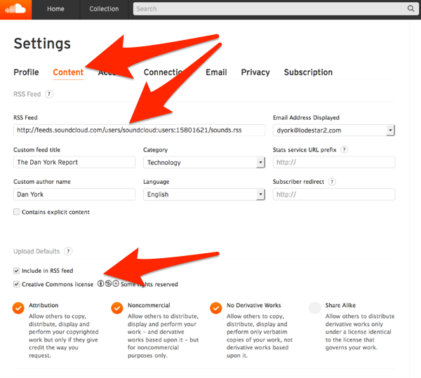
Source: Disruptiveconversations
Now that you’ve created your podcast and added your first episode, it’s time to adjust your content settings.
This will determine how your podcast is presented on SoundCloud.
Under the “Settings” tab, you can control the following:
- Your podcast’s title and description
- Whether listeners can download or stream your episodes
- Whether your podcast is public or private
- What language your podcast is in
- Whether your podcast is available on SoundCloud’s mobile app
- Your podcast’s artwork
- Your podcast’s episode order
- Your podcast’s RSS feed
- Your podcast’s stats
Disclosure: This post may contain affiliate links and I may receive affiliate compensation for some of the links in this post, but at no cost to you if you decide to purchase a paid plan. You can read our affiliate disclosure.
Podcast With SoundCloud: Setting Up Your RSS Feed
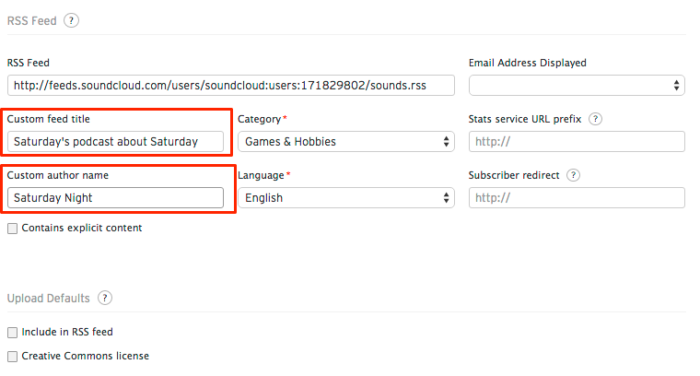
Source: SoundCloud
To submit your podcast to directories and apps like iTunes and Google Play, you need to create an RSS feed.
This is a special file that contains information about your podcast, like the title, description, and episode URLs.
1. Go to your podcast settings
Once you’ve created a podcast and uploaded your first episode, you’ll need to configure a few settings. In the “Podcast Settings” section, you’ll find an RSS feed URL. This is the URL of your podcast’s RSS feed.
2. Copy the RSS feed URL
Copy the RSS feed URL and save it somewhere safe. You’ll need to include this URL in your podcast submission paperwork.
3. Add the RSS feed to your website
If you want, you can add the RSS feed to your website so listeners can easily find and subscribe to your podcast.
To do this, add the following code to your website: Subscribe to my podcast!
4. Submit your podcast to directories and apps
Once you’ve created your RSS feed, you can submit it to podcast directories and apps like iTunes and Google Play.
Be sure to include all of your podcast’s information, like the title, description, and episode URLs.
How To Upload Your Podcast To SoundCloud
Step 1: Click the upload button
Step 2: Select the audio files
To upload your podcast to SoundCloud, select the audio files you want to upload.
You can select one or more files to upload at the same time.
The maximum file size for a single file is 500 MB.
If you have several audio files to upload, it’s recommended that you create a single track for your podcast.
If you have a lot of files to upload, you can create a ZIP file of your files and upload that.
Step 3: Attach a cover image
Adding a cover image to your podcast is a great way to brand your content and make it more visually appealing to listeners.
When choosing a cover image, be sure to choose something that represents your podcast and is in line with your branding.
To add a cover image, simply click on the “Add cover art” button and select the file from your computer.
Pro Tip: Use a high-quality image that is at least 1400×1400 pixels.
If you don’t have a cover image, SoundCloud will automatically generate a default image for you.
Step 4: Add Tags and a Description
Tags
When tagging your podcast, include keywords that listeners might use to find your show.
Think about what your show is about, and what words or phrases listeners might use to find it.
For example, if your show is about entrepreneurship, you might use tags like “entrepreneurship” “small business” “startups” etc.
Description
Your podcast’s description is a great place to tell potential listeners what your show is about, and why they should listen.
Include a brief overview of your show, and highlight any unique or interesting topics that you cover.
You can also use the description to promote your site or blog and include links to those sites.
Be sure to include your contact information so listeners can get in touch with you if they have questions or feedback.
Step 5: Make your podcast public
Once you have created a SoundCloud account and uploaded your first podcast, it’s time to make it public.
This will allow anyone to listen to it, whether they are a SoundCloud user or not.
To make your podcast public, open the podcast in your SoundCloud account and click on the “Settings” tab.
Then, under the “Public” section, check the box next to “Make this podcast public.”
Now, when you share your podcast link, anyone will be able to listen to it.
Benefits of Submitting Your SoundCloud Podcast Feed To Other Distribution Platforms
There are many benefits of submitting your SoundCloud podcast feed to other distribution platforms.
By doing so, you will reach a larger audience, and your podcast will be exposed to new listeners.
Additionally, submitting your podcast to other platforms will help you build your brand and increase your exposure.
There are also many different platforms that you can submit your podcast to, including iTunes, Google Play, and Stitcher.
Each of these platforms has its benefits and drawbacks.
iTunes is one of the most popular podcast platforms, and it has a large audience.
Additionally, iTunes is well-known and respected, and it has a high search engine ranking.
Google Play is also a popular podcast platform, and it offers some advantages over iTunes.
For example, Google Play allows you to include a video introduction for your podcast, and it offers more detailed analytics than iTunes.
Stitcher is another popular podcast platform, and it has a large audience of its own. Additionally, Stitcher offers some unique features, such as the ability to listen to podcasts offline.
By submitting your podcast to other distribution platforms, you will reach a larger audience and you will be exposed to new listeners.
From Podcast Hosting on SoundCloud To Promotion
How to Submit Your SoundCloud Podcast Feed to iTunes

Submitting your podcast to iTunes is the best way to get your podcast in front of the most number of people.
It can also help your podcast rank higher in search results.
Here’s how to submit your podcast hosted on SoundCloud to iTunes:
- Go to https://podcastsconnect.apple.com/ and sign in with your Apple ID.
- Click on the “Podcasts” tab and then click “Submit a Podcast.”
- Enter the following information:
- Feed URL: This is the URL of your podcast’s RSS feed.
- Podcast Title: This is the name of your podcast.
- Podcast Description: This is the description of your podcast.
- Category: This is the category of your podcast.
- Language: This is the language of your podcast.
- Click “Submit.”
Your podcast will be reviewed by Apple and added to the iTunes Store.
How To Submit Your SoundCloud Podcast Feed To Stitcher
Now that you have a great podcast, it’s time to start promoting it!
One of the best ways to do this is to submit your podcast to Stitcher.
Stitcher is a popular podcast app that has been around since 2008.
It has over 12 million active users and is the 4th most popular podcast app in the United States.
Submitting your podcast to Stitcher is a great way to reach new listeners and grow your audience.
First, create a SoundCloud account if you don’t already have one.
Once you have a SoundCloud account, create a new podcast.
In the podcast settings, make sure to include the following information:
- Podcast title
- Podcast description
- Podcast URL
- Podcast artwork
Once you have included this information, save your settings.
Next, create a Stitcher account.
Once you have a Stitcher account, add your podcast.
In the Add a Podcast section, enter the following information:
- Podcast title
- Podcast description
- Podcast URL
- Podcast artwork
Once you have entered this information, save your settings.
Now that you have submitted your podcast to Stitcher, it will be reviewed by the Stitcher team. Once it is approved, it will be live to the whole world.
How To Submit Your SoundCloud Podcast Feed To TuneIn
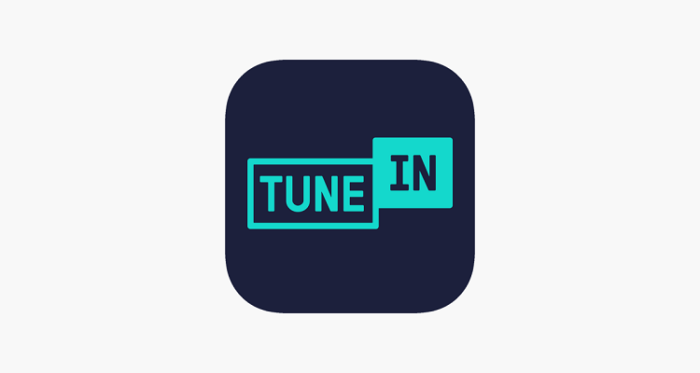
Source: TuneIn
TuneIn is a popular online radio service with over 70 million users that allows you to listen to your favorite radio stations, sports, talk shows, and podcasts from around the world.
Now let’s see how to submit your SoundCloud podcast feed to TuneIn.
First, create a SoundCloud account if you don’t already have one.
Once you have created an account, click on the “Podcasts” tab and then click on the “Create a Podcast” button.
Enter the following information into the “Podcast Details” form:
- Title: The title of your podcast
- Description: The description of your podcast
- Episodes: The number of episodes in your podcast
- Category: The category of your podcast
- Country: The country your podcast is from
- Link: The link to your podcast RSS feed
Click on the “Create Podcast” button and then copy the link to your podcast RSS feed.
Now, go to the TuneIn website and click on the “Podcasts” tab.
Click on the “Add a Podcast” button and then paste the link to your podcast RSS feed into the “Podcast RSS Feed” field.
Click on the “Add Podcast” button and your podcast will be added to TuneIn.
How To Submit Your SoundCloud Podcast Feed To Spotify
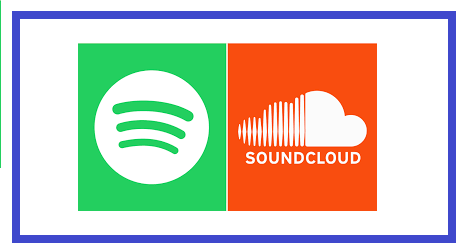
Source: FT
How can you submit your podcast’s SoundCloud feed to Spotify as this will make your podcast available to Spotify’s massive user base, and could help you reach new listeners?
To submit your podcast to Spotify, follow these steps:
- Log in to your SoundCloud account.
- Click on the “Settings” tab and then select “Spotify”.
- Copy the URL of your podcast’s SoundCloud feed.
- Paste the URL into the Spotify submission form.
- Click “Submit”.
- Spotify will review your submission and, if approved, will add your podcast to their library.
That’s it! Now your podcast will be available on Spotify.
Promote Your SoundCloud Podcast on Social Media

Since you are doing your podcasting hosting on SoundCloud, you’ll want to add your RSS feed to your social media networks so your followers can easily subscribe.
Adding your RSS feed to Twitter
To add your RSS feed to Twitter, go to your Twitter account settings and click on the Widgets tab.
From there, you’ll be able to add a new widget and select the RSS feed you want to use.
Adding your RSS feed to Facebook
To add your RSS feed to Facebook, go to your Facebook account settings and click on the Apps tab.
From there, you’ll be able to add a new app and select the RSS feed you want to use.
Adding your RSS feed to Google+
To add your RSS feed to Google+, go to your Google+ account settings and click on the Circles tab.
From there, you’ll be able to add a new circle and select the RSS feed you want to use.
Importance of Your SoundCloud Podcasting Stats
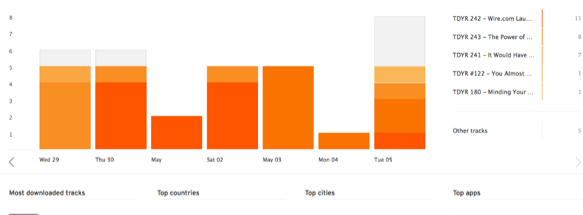
When you are podcasting, it is important to track your stats to see how well your show is doing.
This will help you to determine what you need to change to make your podcast more successful.
There are a few different stats that you should track, including:
Downloads
This is the number of times that your podcast episode has been downloaded.
This is a good indicator of how popular your podcast is.
Listeners
This is the number of unique listeners who have listened to your podcast.
This is a good indicator of how engaged your audience is.
Shares
This is the number of times that your podcast episode has been shared on social media.
This is a good indicator of how interested your audience is and how successful your marketing efforts are.
Comments
This is the number of comments that your podcast episode has received.
This is a good indicator of how engaged your audience is and how successful your marketing efforts are.
Reviews
This is the number of reviews that your podcast episode has received.
This is a good indicator of how successful your marketing efforts are and how engaged your audience is.
Pro Tips To Succeed In Podcast Hosting On SoundCloud
Grow your following
There are many ways to grow your following on SoundCloud. We will discuss some of the most effective methods.
1. Use effective titles and descriptions
Your titles and descriptions are important for attracting listeners.
Make sure to use keywords in your titles and descriptions, and make them interesting and catchy.
2. Share your podcasts on social media
Make sure to share your podcasts on social media.
This will help to increase exposure and attract new listeners.
3. Use tags
Tags are important for helping people find your podcasts.
Make sure to use relevant tags to help people find your content.
4. Cross-promote your podcasts
Cross-promote your podcasts with other content on your website or blog.
This will help to increase exposure and attract new listeners.
5. Use SoundCloud’s promotion tools
SoundCloud offers many tools to help you promote your podcasts.
Make use of these tools to help you grow your following.
6. Engage with listeners
Engage with listeners and encourage them to share your podcasts with their friends.
This will help to increase exposure and attract new listeners.
7. Be consistent
Be consistent with your publishing schedule and make sure to publish new podcasts regularly.
This will help to keep listeners engaged and attract new listeners.
8. Network with other podcasters
Network with other podcasters and collaborate
Interact with fans
Interact with your fans on SoundCloud to boost your podcasting.
When someone takes the time to follow your podcast, be sure to follow them back and thank them.
Also, like and repost their comments to show you’re paying attention and engaged.
This helps to create a community of supporters around your podcast.
Share your podcast

- Share your SoundCloud podcast episode on social media.
- Share your podcast episode on your website or blog.
- Share your podcast episode in relevant online communities.
- Embed your SoundCloud podcast episode on your website or blog.
- Share your SoundCloud podcast episode with email subscribers.
- Share your SoundCloud podcast episode with podcast directories.
- Add your SoundCloud podcast episode to your podcast player’s home screen.
- SoundCloud Promotion: Get your podcast featured on SoundCloud.
Benefits of Podcasting Hosting on SoundCloud
As a business owner, you likely already know the importance of staying up to date with the latest trends in your industry.
If you’re not podcasting yet, you’re missing out on one of the most effective ways to reach new customers and grow your business.
Here are just a few reasons why you should start podcasting today:
1. Increased Visibility
With more and more people listening to podcasts every day, it’s a great way to get your business in front of a new audience.
By hosting your podcast on SoundCloud, you’ll not only reach a larger audience, but you’ll also get access to SoundCloud’s massive network of podcast listeners.
2. Greater Engagement
Podcasting is a great way to engage with your audience and get them excited about your business.
When you host your podcast on SoundCloud, you’ll get access to SoundCloud’s powerful tools and features that will help you keep your listeners engaged.
3. Improved SEO
One of the best things about podcasting is that it can help improve your SEO.
By including keywords and phrases in your podcast titles and descriptions, you’ll help your business rank higher in search engine results pages.
4. Increased Brand Awareness
Podcasting is a great way to increase brand awareness for your business. When you host your podcast on SoundCloud, you’ll
What Is Podcasting
Podcasting is a method of distributing audio and/or video content over the Internet, using syndication feeds, for playback on portable media players and computers.
The term “podcasting” is a neologism derived from “iPod” and “broadcasting”.
The word was first used by Ben Hammersley in The Guardian on August 5, 2004.
Podcasting allows people to subscribe to a feed of audio or video content, which is automatically downloaded and played back on portable media players and computers.
Disclosure: This post may contain affiliate links and I may receive affiliate compensation for some of the links in this post, but at no cost to you if you decide to purchase a paid plan. You can read our affiliate disclosure.
Tips for Getting Started With Podcasting (on or not SoundCloud)
So you want to start a podcast?
Great! Podcasting is a fun, engaging way to share your thoughts and ideas with the world.
Here are a few tips to help you get started:
1. Choose a topic that you’re passionate about.
Podcasting is a great way to share your thoughts and ideas with the world, so choose a topic that you’re passionate about.
This will make it easier for you to come up with ideas for new episodes, and it will also make the process more enjoyable for you.
2. Choose a format that works for you.
There are a variety of different formats you can use for your podcast, so choose one that works best for you.
Some popular formats include interview-based podcasts, solo podcasts, and panel podcasts.
3. Find a co-host or panel of guests.
If you’re not comfortable hosting a podcast on your own, consider finding a co-host or panel of guests.
This will help make the process more enjoyable for you, and it will also make the podcast more interesting for listeners.
4. Create a strong branding strategy.
Your branding is important, especially when it comes to podcasts.
Also, you want your listeners to be able to easily identify your podcast, so create a strong branding strategy that will help you stand out from the competition.
5. Choose the right tools.
You can use SoundCloud for your podcasting hosting needs.
Podcast Hosting On SoundCloud FAQ
Can I have multiple RSS feeds per account?
At this time, you can only add one RSS feed per account.
How long does it take for a podcast to show up on Spotify from SoundCloud?
The answer to this question depends on a few factors, such as how long the podcast episode is, how popular the podcast is, and how busy Spotify is.
Generally, it takes a few hours for a podcast episode to show up on Spotify from SoundCloud.
However, if the podcast is very popular, it may take a little longer for the episode to appear on the streaming service.
If I change my SoundCloud URL, does it impact my RSS feed?
Your RSS feed will not be impacted if you change your SoundCloud URL.
How much does it cost to host a podcast on SoundCloud?
SoundCloud offers both free and paid plans for podcast hosting.
The free plan includes unlimited storage and bandwidth and allows users to upload up to three hours of audio content per month.
Paid plans start at $6 per month, and include additional features such as longer upload times, ad-free streaming, and the ability to publish podcasts to iTunes and other podcast directories.
How can I rearrange tracks in my RSS feed?
There are a few ways to rearrange the tracks in your RSS feed.
- Drag and drop the tracks in the order you want them to appear in your feed.
- Use the up and down arrows to the right of each track to move them up or down in order.
- Click the track you want to move and use the left and right arrows to move it to the desired location.
- Click the “Reorder Feed” button to save your changes.
How do I upload an RSS feed to SoundCloud?
To upload your RSS feed to SoundCloud, you will first need to create a SoundCloud account.
Once you have created an account, you will be able to log in to your account and click on the “Upload” button located in the top toolbar.
Once you have clicked on the “Upload” button, you will be taken to the “Upload” screen.
On this screen, you will be able to select the file that you would like to upload.
You can either select a file from your computer or you can select a file from a URL.
Once you have selected the file that you would like to upload, you will need to fill out some additional information about the file.
The first piece of information that you will need to fill out is the “Title” of the file.
This [“Title”] is the name of the file that will be displayed on SoundCloud.
The next piece of information that you will need to fill out is the “Description“.
Can I use music in my podcast?
The use of music in podcasts is a topic of much debate.
Many podcasters choose to use music in their shows, while others believe that it is not necessary and can be distracting.
So, what’s the verdict?
There are a few things to consider when deciding whether or not to use music in your podcast.
First, you need to make sure that you have the right to use the music in your podcast.
If you don’t have the rights, you could end up getting in trouble with the copyright holder.
Another thing to consider is how the music will be used.
If the music is just playing in the background, it may not be as distracting to your listeners. However, if the music is being used as part of the show, it may be a little more difficult to focus on the content.
Ultimately, it’s up to you whether or not to use music in your podcast.
Is SoundCloud good for podcast Hosting?
When it comes to podcast hosting, there are a lot of different options to choose from.
SoundCloud is one of those options, and it can be a great choice for some podcasters.
But it’s not the best choice for everyone.
Here are some things to consider when deciding whether or not SoundCloud is a good fit for your podcast:
Sound Quality
One of the biggest considerations when choosing a podcast host is sound quality.
And, unfortunately, SoundCloud doesn’t always deliver the best sound quality.
If you’re looking for a host that will give you the best possible sound quality, SoundCloud maybe, or not the best option.
Ease of Use
SoundCloud is also not the easiest platform to use.
It can be a bit confusing for beginners, and it can be difficult to figure out how to do everything you want to do
How long does it take iTunes to accept or update my feed?
It can take a few days for iTunes to accept a new podcast feed, and a few more days for the update to show up in the iTunes Store.
If you’re not seeing your new episodes in the store after a week, there may be a problem with your feed.
Can you make money with podcasting?
There is no single answer to this question since success with podcasting depends on a variety of factors, including the topic of your podcast, the size and reach of your audience, and how you monetize your show.
However, if you have a niche audience that is passionate about your topic, podcasting can be a very lucrative way to make money.
One way to make money with podcasting is to sell sponsorships.
If you have a popular show, you can charge sponsors a premium for ad space.
You can also sell ad space on your website or blog, or include links to sponsor’s websites in your show notes.
Another way to make money with podcasting is by creating products or services related to your show.
For example, if you have a cooking podcast, you could create a cookbook or video course related to your show’s content.
Or, if you have a travel podcast, you could create a travel guide or video course.
How can I import episodes to my RSS feed?
There are a few ways to import episodes to your RSS feed.
One way is to use a program like FeedBurner.
FeedBurner is a program that allows you to import your podcast episodes into your RSS feed.
You can also use a program like iTunes to import your podcast episodes into your RSS feed.
Is uploading podcasts to SoundCloud free?
Yes and no!
SoundCloud offers a limited amount of uploads for free users, but if you want to upload more, you need to upgrade to a paid account.
How do I switch from my current host to SoundCloud?
To switch from your current host to SoundCloud, please follow these simple steps:
- Export your current podcast RSS feed
- Import your RSS feed into SoundCloud
- Connect your SoundCloud account with your social media accounts
- Upload your podcast episodes
- Publish your podcast
- Export your current podcast RSS feed
To export your current podcast RSS feed, please follow these simple steps:
- Log into your current host account
- Navigate to your podcast settings
- Export your podcast RSS feed
- Save the RSS feed to your computer
- Import your RSS feed into SoundCloud
To import your RSS feed into SoundCloud, please follow these simple steps:
- Log into your SoundCloud account
- Click on the “+” button in the top left-hand corner of the screen
- Select and hit import.
How do I redirect my SoundCloud RSS feed to another host?
There are a few ways to do this, but we’ll show you how to do it using Feedburner.
- Log in to your SoundCloud account and click on the “Settings” tab.
- Scroll down to the “RSS Feed” section and copy the URL.
- Log in to your Feedburner account and click on the “Burn a Feed” tab.
- Paste the URL into the “Feed URL” field and click on the “Next” button.
- In the “Name your Feed” field, enter a name for your feed and click on the “Next” button.
- In the “Description” field, enter a description for your feed and click on the “Next” button.
- In the “Category” field, select the category that best describes your feed and click on the “Next” button.
- In the “Publicize tab”, Click the Publicize tab.
- Locate and click the Chicklet Chooser service.
- Click the radio button next to the button you want to display on your site.
- From the drop-down select the platforms you want to redirect to.
Conclusion: Podcasting Hosting on SoundCloud
So, you have decided that you want to start a podcast.
Excellent!
Podcasting is a great way to share your thoughts and ideas with the world, and with the right hosting platform, it can be a very easy process.
One of the most popular podcast hosting platforms is SoundCloud.
Not only is it easy to use, but it also has a large user base, which can help you to grow your podcast audience.
In this article, I have covered everything you need to know about SoundCloud podcast hosting.
I have looked at the different features that SoundCloud offers and explained how to set up a podcast on SoundCloud.
So, whether you are a first-time podcaster or you are looking for a new podcast hosting platform, SoundCloud is a great choice.
Thanks for reading!
See your podcasting.
Disclosure: This post may contain affiliate links and I may receive affiliate compensation for some of the links in this post, but at no cost to you if you decide to purchase a paid plan. You can read our affiliate disclosure.

